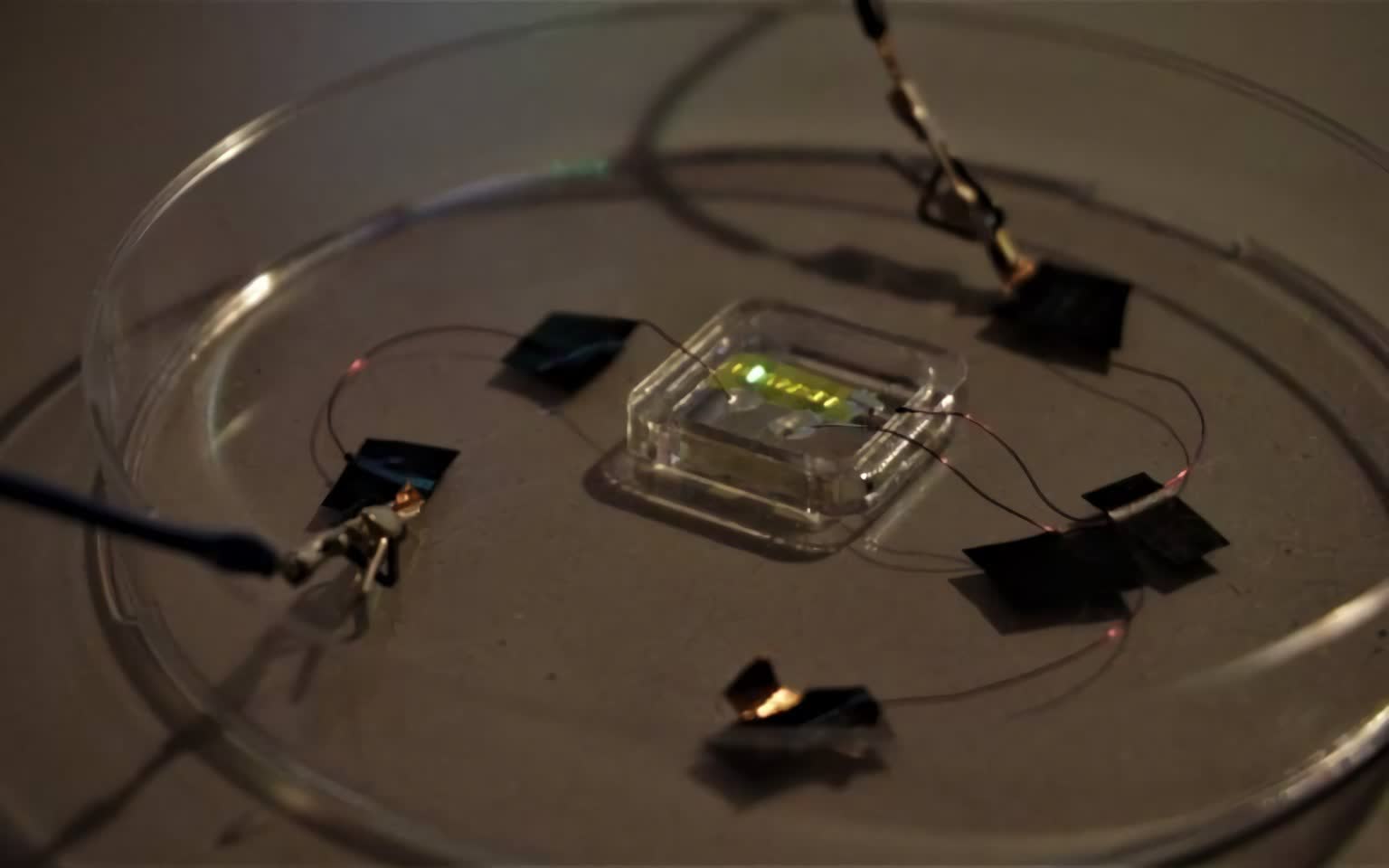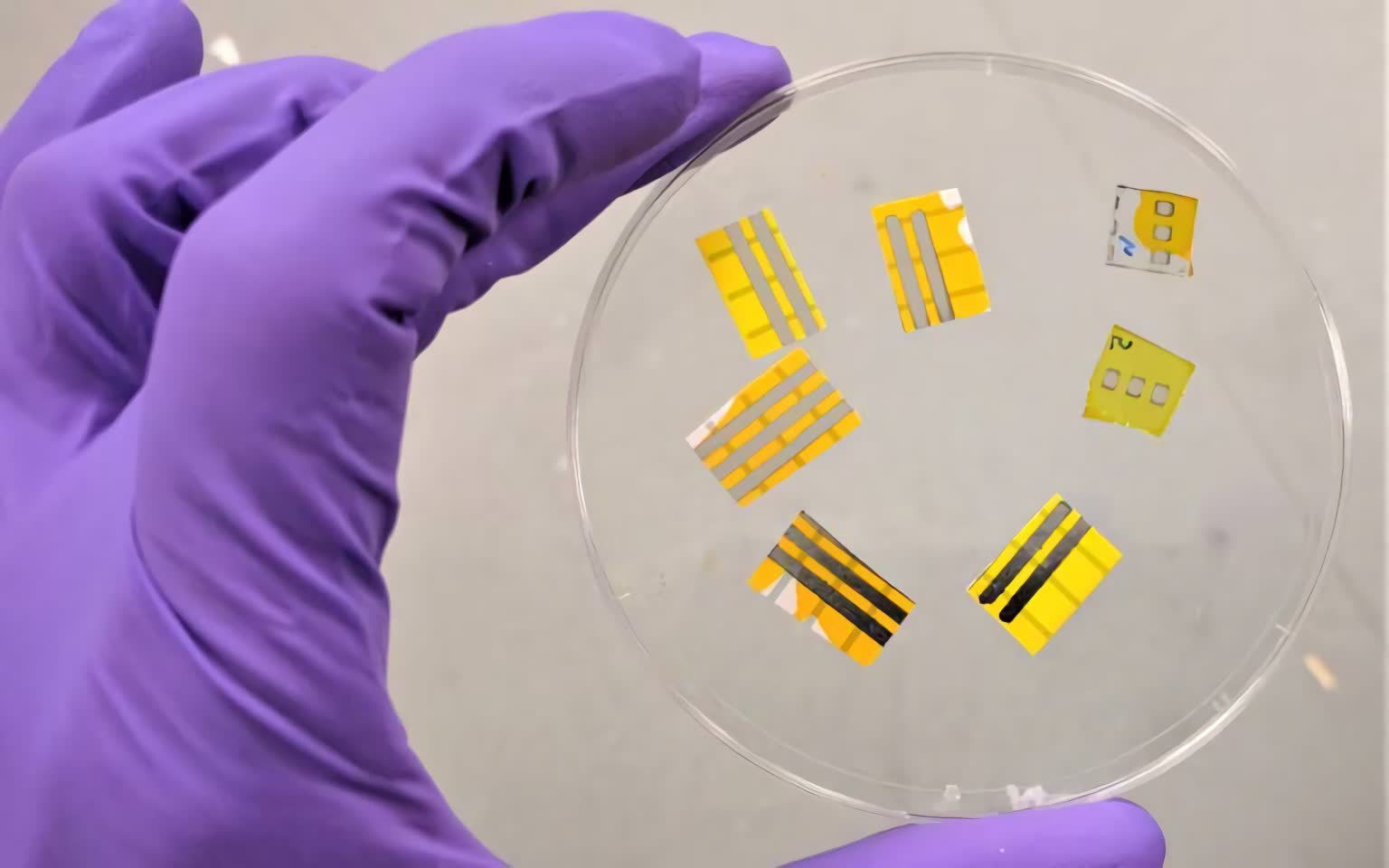Forward-looking: OLED tech has embedded itself in everyday devices such as smartphones and televisions, and it could end up in something less conventional: tattoos. Their use extends beyond body art that glows, with potential applications in the fields of medicine, sports, and even food waste reduction.
These OLED smart tattoos aren't inserted into the dermis layer of the skin using a needle, as with the traditional version. Instead, they're applied in the same way as temporary tattoos---by dabbing them with water before being removed using soap.
A team from the University College London (UCL) and the Italian Institute of Technology are behind the tattoos. They use a 76-nanometer-thick light-emitting polymer using a technique called spin coating, in which the polymer is applied to a substrate that is spun at high speed, producing an extremely thin and even layer.
The electroluminescent polymer, which emits light when subjected to an electric field, is placed between a pair of electrodes protected by an insulating layer and applied to commercial tattoo paper. The applied tattoo is just 2.3 micrometers thick, about a third of the length of a single red blood cell.

"The tattooable OLEDs that we have demonstrated for the first time can be made at scale and very cheaply," says UCL's Professor Franco Cacialli, in a statement. "They can be combined with other forms of tattoo electronics for a very wide range of possible uses. These could be for fashion - for instance, providing glowing tattoos and light-emitting fingernails."
The tattoos have other uses beyond looking cool. "In sports, they could be combined with a sweat sensor to signal dehydration. In health care, they could emit light when there is a change in a patient's condition --- or, if the tattoo was turned the other way into the skin, they could potentially be combined with light-sensitive therapies to target cancer cells, for instance."
The team has experimented with attaching the tattoos to glass, plastic, and even fruit. This could allow them to be connected to food packaging, indicating when the contents have passed their expiration date.
In their current form, the tattoos' sensors quickly degrade once they're exposed to air, but researchers are working on this problem, along with how to integrate a tiny power supply.
